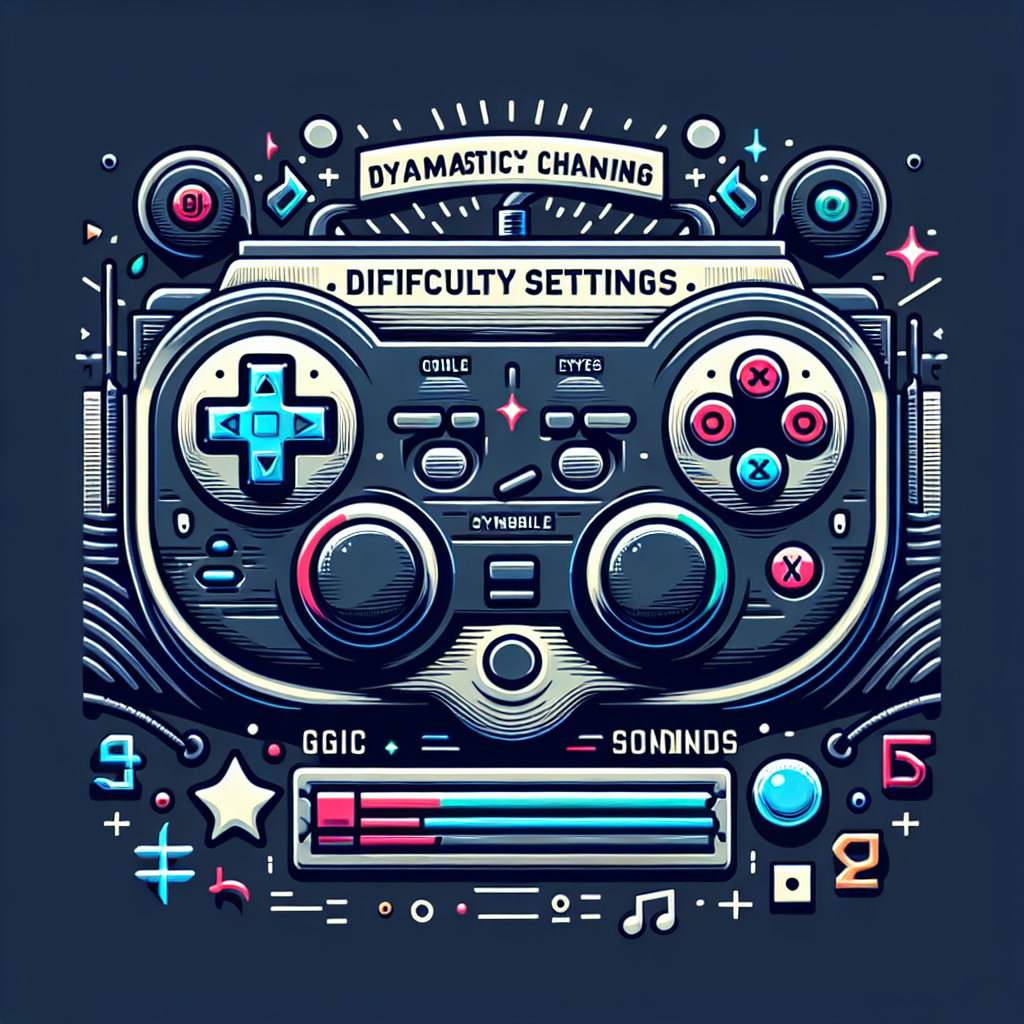Introduction to Sony’s Patent Application for Dynamic Difficulty Adjustments
Sony has recently taken a step towards innovating the gaming experience by applying for a patent that aims to dynamically adjust the difficulty of games. This system is designed to modify various game parameters in response to a player’s performance, potentially offering a more personalized and engaging gameplay experience. The information about this patent was revealed through the World Intellectual Property Organization, indicating Sony’s commitment to enhancing how games adapt to different player skill levels.
Sony’s Dynamic Difficulty Adjustment Patent
Sony’s proposed system for adjusting game difficulty is a testament to the company’s innovative approach to gaming. The system is designed to modify a range of game parameters based on the player’s performance, with the goal of maintaining an optimal level of challenge. The types of adjustments that could be made include:
- Movement speed: The game could alter how quickly a character moves through the environment, affecting how players navigate challenges.
- Delay or hesitation: This could influence the responsiveness of game controls or character actions, adding to the difficulty.
- Character strengths: Attributes such as health, attack power, or defense could be dynamically adjusted to keep the game challenging.
- Numbers of competitors: The system might increase or decrease the number of enemies based on how well the player is doing.
These adjustments aim to provide a tailored gaming experience that adapts to the skill level of the player, potentially making games more accessible and enjoyable for a wider audience.
Comparison with Existing Systems
The concept of dynamic difficulty is not entirely new to the gaming industry. Sony’s system bears similarities to existing mechanisms that adjust game challenges in response to player performance. Notably, the AI director from the game Left 4 Dead is an early example of such a system. It dynamically alters the intensity and frequency of enemy attacks based on how well players are doing, mixing pre-determined scenarios with a degree of randomness.
Another comparable system is the world tier system in Outriders, which functions somewhat like an experience (XP) bar. In this system, players can progress through different world tiers that dictate the game’s difficulty. However, unlike Sony’s proposed system, the world tier level can decrease upon the player’s death, which directly affects the game’s challenge level.
These systems share the common goal of providing a balanced and engaging experience that adapts to the player’s skill level, but Sony’s patent suggests a broader application that could potentially encompass a wider array of game parameters beyond enemy behavior and XP thresholds.
Overlap with EA’s Patent
While Sony’s patent for dynamic difficulty adjustments is a recent development, it’s important to consider its potential overlap with a similar patent held by Electronic Arts (EA). EA’s patent focuses on altering controller settings based on player performance, with the intention of improving user experience. Here’s a comparison of the key aspects of both patents:
| Sony’s Patent | EA’s Patent |
|---|---|
| Adjusts game difficulty parameters such as movement speed, character strengths, and number of competitors. | Changes controller settings to enhance player performance, potentially affecting aspects like aiming sensitivity. |
| Based on an expected level of performance, potentially encompassing a broad range of gameplay elements. | Specifically targets controller input, suggesting a more focused approach to player assistance. |
| May include adjustments to delay or hesitation settings, which could affect control responsiveness. | Could be argued that adjustments to controller sensitivity fall under the scope of EA’s patent. |
The potential for overlap raises questions about the legal implications of such patents in the gaming industry. If Sony’s adjustments to delay or hesitation settings were to impact controller sensitivity, it might be seen as encroaching on EA’s patented territory. However, the extent to which either company will enforce their patents remains to be seen.
The Implications of Patenting Game Mechanics
The practice of patenting game mechanics can have significant implications for the video game industry. It can potentially stifle innovation by limiting the ability of developers to implement similar features without facing legal challenges. A notable example is the patent for the Nemesis system, which was a unique feature in the “Middle-earth: Shadow of Mordor” series. This system created personalized enemy encounters based on player interactions, and its patent could discourage other developers from creating systems with similar dynamics.
While holding a patent gives a company legal control over a particular innovation, it does not necessarily mean that the company will actively enforce it against others. For instance, Microsoft has held a patent for awarding bonus points for “feats of style” in games for many years, but there is no record of them enforcing it, despite many games using similar mechanics.
However, the mere existence of such patents can have a chilling effect on developers, who may avoid exploring certain mechanics for fear of legal repercussions. This could lead to a homogenization of game features and a reluctance to experiment with new ideas, ultimately impacting the diversity and creativity within the industry.
There is a distinct difference between holding a patent and choosing to enforce it. While a company may secure a patent to protect a unique game mechanic or system, the decision to enforce the patent through legal action is another matter. The potential for enforcement can create a chilling effect on game developers, who may be deterred from innovating or incorporating certain features into their games due to the fear of litigation. This concern is particularly relevant for smaller studios that may lack the resources to defend against a claim from a larger entity like Sony. The balance between protecting intellectual property and fostering a creative and open environment for game development continues to be a delicate and important issue within the industry.

